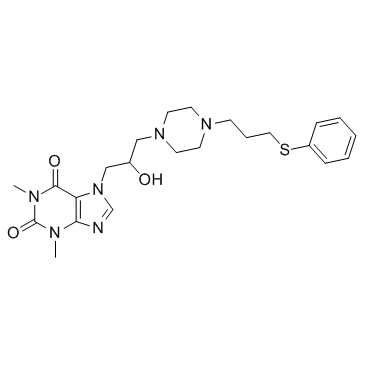Neuroscience
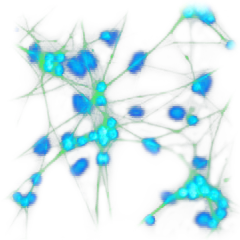
Neuroscience
Neurons communicate with each other, effector organs and sensory organs through the neurotransmitter – receptor pathway at synapses. Neurotransmitters can be divided into 4 major groups: 1. Amino acids (glumate, aspartate, serine, glycine and GABA); 2. Monoamines (norepinephrine, epinephrine, dopamine, histamine, and serotonin); 3. Peptides (opioid peptides, substance P, somatostatin); and 4. Others (acetylcholine, NO, nucleosides).
Targets for Neuroscience
- 5-HT Receptor(521)
- AChR(57)
- AChE(103)
- Alzheimer(88)
- Amyloid β(130)
- BACE(5)
- CGRP (32)
- COX(290)
- DAPK(5)
- Dopamine Receptor(304)
- GABA Receptor(234)
- Gap Junction(15)
- GluR(121)
- Histamine(2)
- Histamine Receptor(233)
- mPEGS-1(4)
- Muscarinic Receptor(42)
- Neuroscience Peptides(47)
- Nicotinic Receptor(65)
- P2 Receptor(2)
- P2X7 receptor(3)
- SSRIs(7)
- Substance P/NK1 Receptor(20)
- NMDA(2)
- Cholecystokinin Receptor(24)
- GPR139(4)
- mAChR(141)
- MCHR1 (GPR24)(15)
- Neurokinin Receptor(61)
- iGluR(136)
- nAChR(67)
- Beta-secretase(24)
- CaMK(31)
- Dopamine Transporter(19)
- Monoamine Oxidase(85)
- Serotonin Transporter(57)
- Behavioral Neuroscience(274)
- DREADD(0)
- Huntington(10)
- Neuroendocrinology(39)
- Neuroprotection(81)
- Ophthalmology(116)
- Pain Research(166)
- Parkinson(49)
- Seizure Disorders(74)
- Prion(6)
- Cholinesterases(13)
Products for Neuroscience
- Cat.No. Nom du produit Informations
-
GC63267
α-Chaconine
L'α-chaconine inhibe les expressions de COX-2, IL-1β, IL-6 et TNF-α au niveau transcriptionnel.
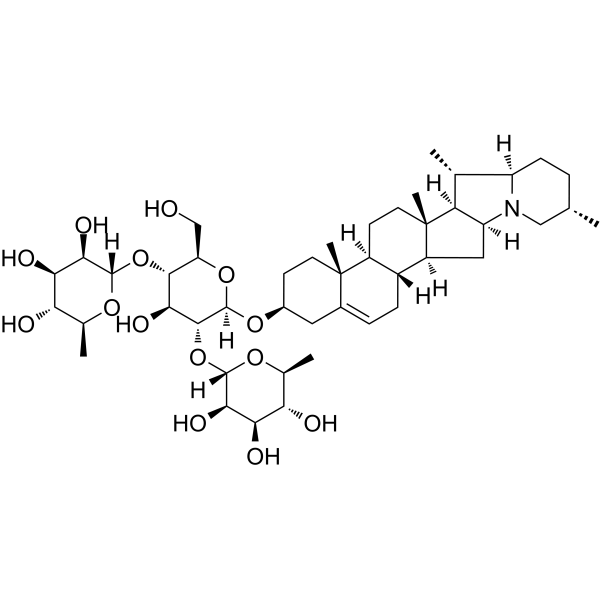
-
GC49097
α-Conotoxin AuIB (trifluoroacetate salt)
GCCSYPPCFATNPDC
A conotoxin and an antagonist of α3β4 subunit-containing nAChRs
-
GC26093
α-Conotoxin GI
α-Conotoxin GI, a 13-residue peptide originally isolated from the venom of the fish-hunting cone snail Conus geographus, acts as a competitive antagonist for the muscle-type nicotinic acetylcholine receptor (nAChR) with excellent selectivity for α/δ receptor subunit binding over α/γ.
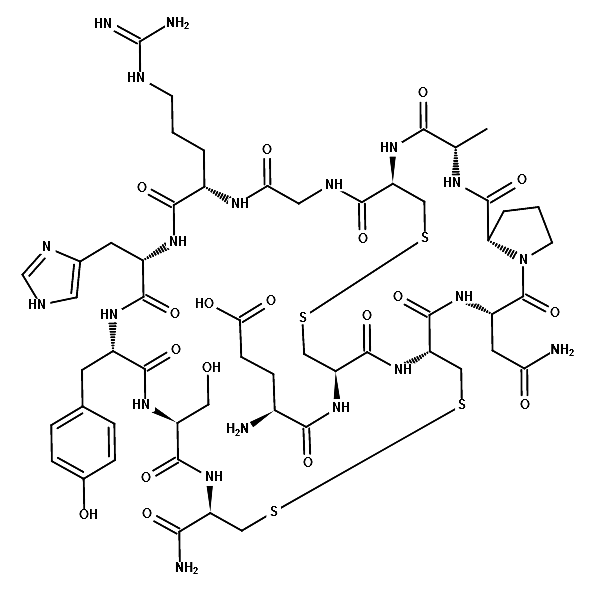
-
GC49140
α-Conotoxin ImI (trifluoroacetate salt)
α-CTx ImI, GCCSDPRCAWRC
A conotoxin and an antagonist of α7 nAChRs
-
GC49838
α-Cortolone
20α-Cortolone, NSC 59872
A metabolite of cortisol
-
GC40262
α-Humulene
αCaryophyllene, (±)-αHumulene
α-L'humulène est un constituant principal de Tanacetum vulgare L.
-
GC64563
α-Methylserotonin

-
GC48292
α-MSH (human, mouse, rat, porcine, bovine, ovine) (trifluoroacetate salt)
α-Melanocyte-stimulating Hormone, Ac-SYSMEHFRWGKPV-NH2
α-MSH (α-Melanocyte-Stimulating Hormone) TFA, un neuropeptide endogène, est un agoniste endogène du récepteur 4 de la mélanocortine (MC4R) avec des activités anti-inflammatoires et antipyrétiques.
-
GC41499
α-Phellandrene
p-Mentha-1,5-diene, (±)-α-Phellandrene
α-Phellandrene is a cyclic monoterpene that has been found in various plants, including Cannabis, and has diverse biological activities.
-
GC10873
α-Spinasterol
Bessisterol, Hitodesterol
α-Le spinasterol, isolé de Spinacia oleracea, a une activité antibactérienne.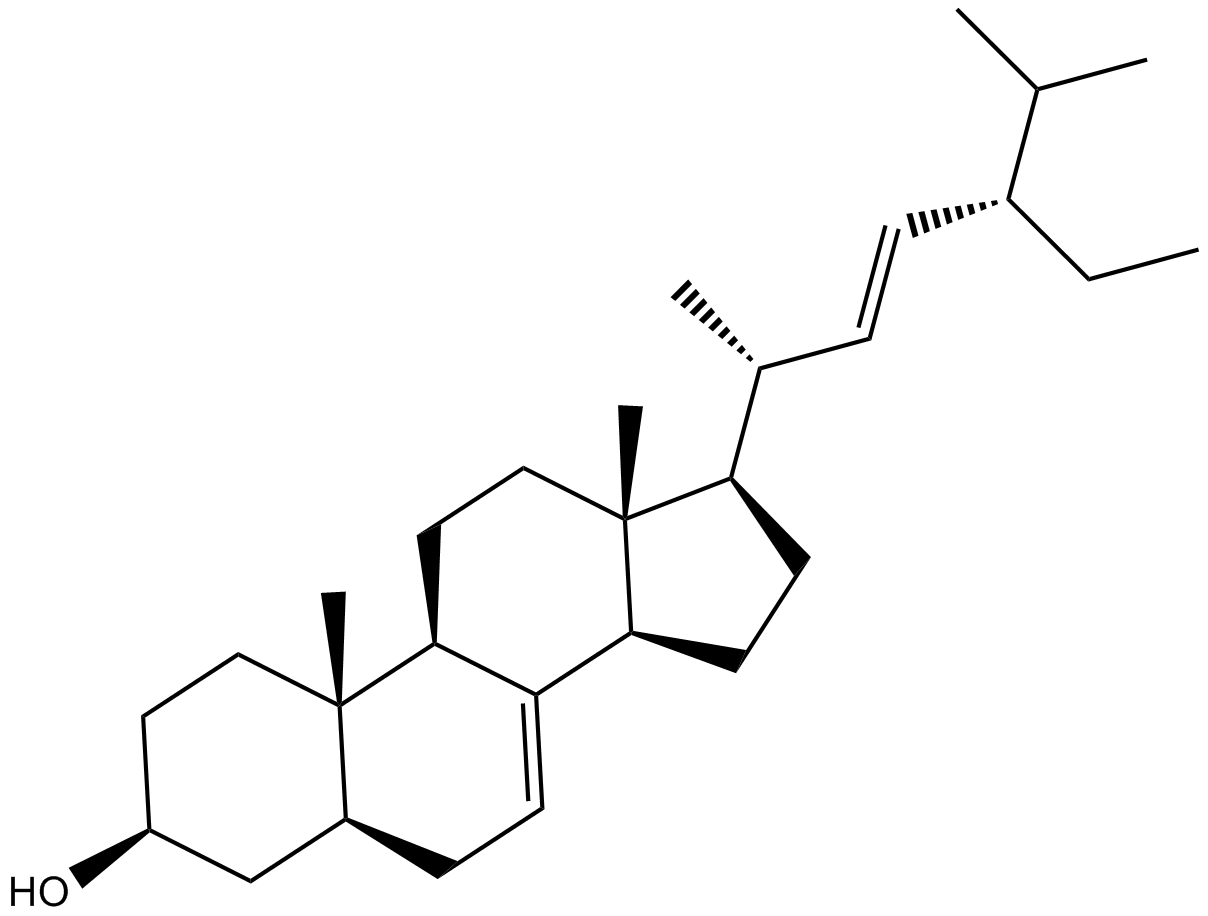
-
GC63615
α-Thujone
α-La thuyone est un monoterpène isolé de l'huile essentielle de Thuja occidentalis avec de puissantes activités anti-tumorales.
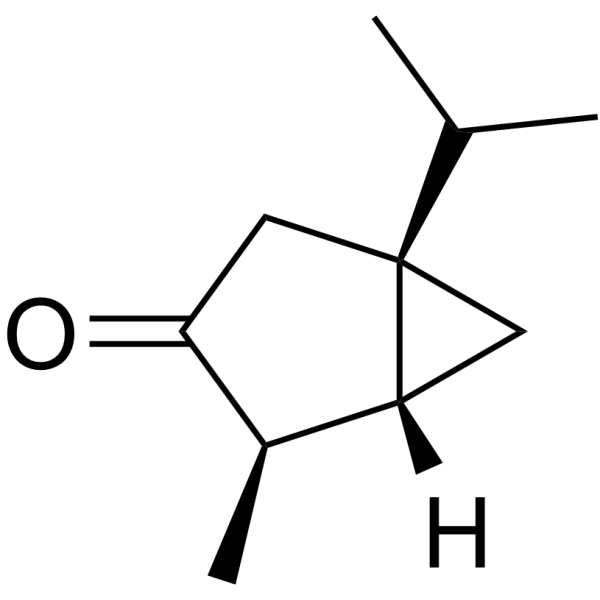
-
GC70179
α7 Nicotinic receptor agonist-1
α7 Nicotinic receptor agonist-1 (Préparation 5) est un agoniste des récepteurs nicotiniques α7 nAChR. L'agoniste des récepteurs nicotiniques α7 peut être utilisé dans la recherche sur les troubles mentaux tels que la schizophrénie, le trouble bipolaire ou maniaco-dépressif et l'anxiété, ainsi que sur les troubles intellectuels tels que la maladie d'Alzheimer, les déficits d'apprentissage, les déficits cognitifs, le trouble de l'attention avec hyperactivité (TDAH), la perte de mémoire, la démence à corps de Lewy et le TDAH.
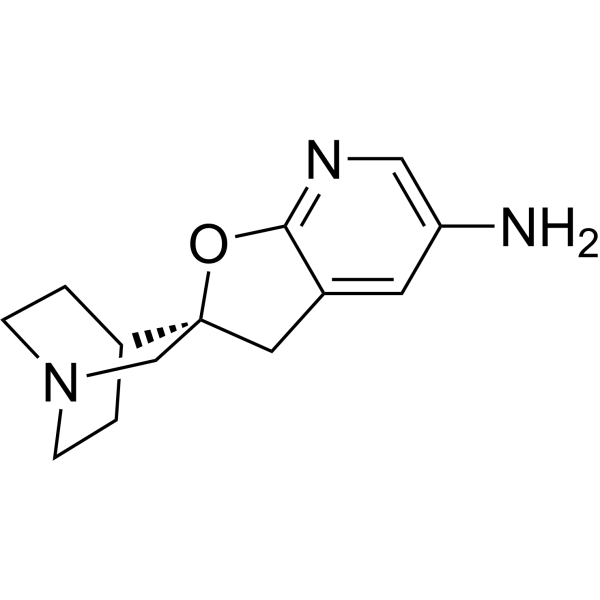
-
GC49467
β-Aescin
A triterpenoid saponin with diverse biological activities

-
GC63273
β-Amyloid (1-14),mouse,rat
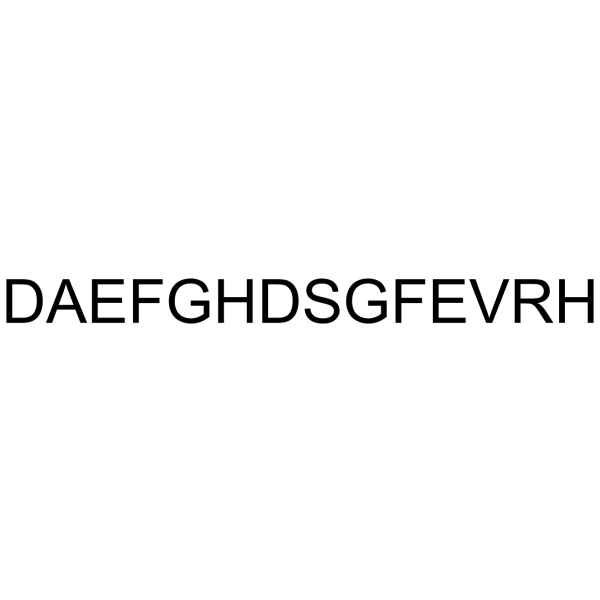
-
GC66089
β-Amyloid (1-40) (TFA)
Amyloid Beta-Peptide (1-40) (human) TFA; Amyloid β-Peptide (1-40) (human) TFA
β-Amyloid (1-40) TFA est une protéine primaire dans les plaques trouvées dans le cerveau des patients atteints de la maladie d'Alzheimer.
-
GC70182
β-Amyloid (1-40), FAM-labeled TFA
β-Amyloïde (1-40), TFA marqué FAM est un peptide β-amyloïde (1-40) marqué avec le fluorophore FAM (Λex= 492 nm et Λem= 518 nm).

-
GC63274
β-Amyloid (1-42), (rat/mouse) (TFA)
Amyloid β-peptide (1-42) (rat/mouse) TFA
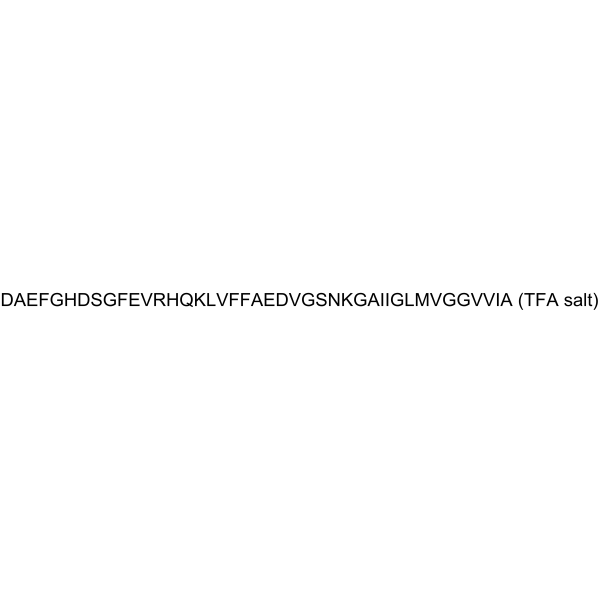
-
GC37984
β-Amyloid (1-42), rat
Amyloid β-peptide (1-42) (rat/mouse)
β-Amyloid (1-42), rat est un peptide 42-aa, montre un effet cytotoxique sur les tranches d'hippocampe aigu et utilisé dans la recherche de la maladie d'Alzheimer's.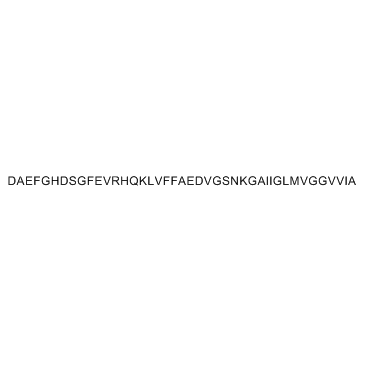
-
GC66416
β-Amyloid (22-35) (TFA)
Amyloid β-Protein (22-35) (TFA)
β-Amyloid 22-35 (Amyloid β-Protein 22-35) TFA, le fragment des résidus 22-35 de la β-protéine amyloÏde, a un effet cytotoxique sur les neurones cultivés de l'hippocampe de rat dans un milieu sans sérum. β-Amyloid 22-35 TFA forme des agrégats et des fibrilles amyloÏdes typiques ressemblant À celles de la β-protéine amyloÏde dans une solution tampon neutre).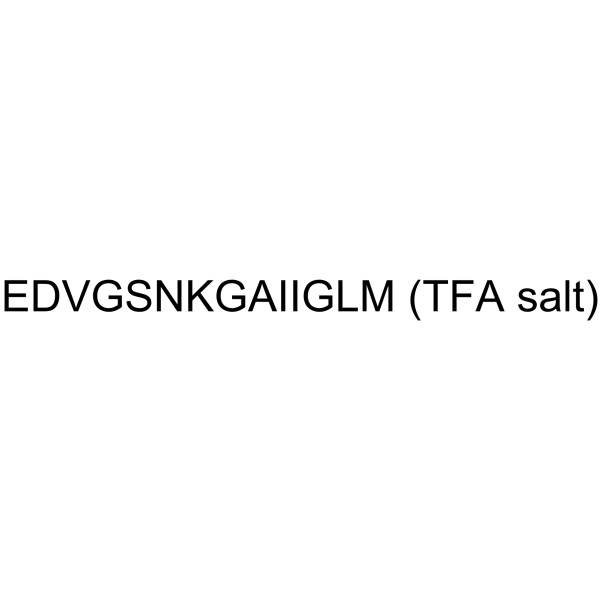
-
GC66346
β-Amyloid (42-1), human TFA
Amyloid β Peptide (42-1)(human) TFA
β ; -AmyloÏde (42-1), le TFA humain est la forme inactive de l'amyloÏde β ; Peptide (1-42). β-AmyloÏde (42-1), le TFA humain est un peptide de 42 acides aminés qui joue un rÔle clé dans la pathogenèse de la maladie d'Alzheimer.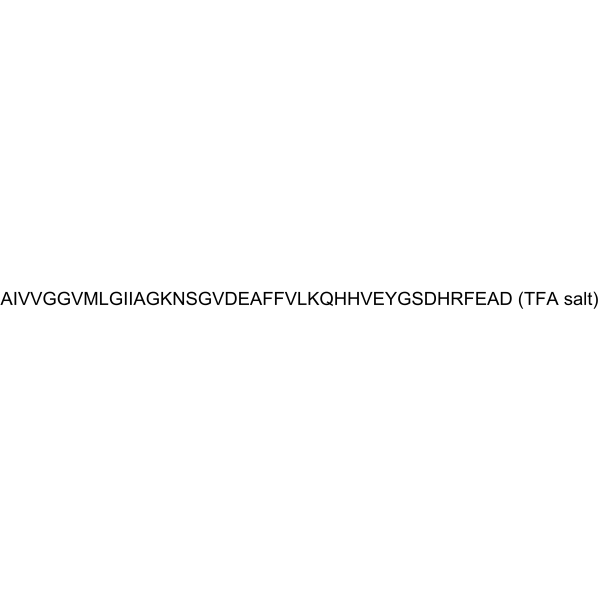
-
GC37986
β-Amyloid 1-17
β-Amyloid 1-17 est un peptide de β-Amyloid, stabilise les fibres et joue un rôle dans la formation de fibres Aβ.
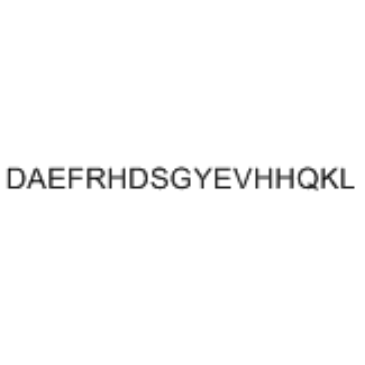
-
GC37987
β-Amyloid 1-20
β-Amyloid 1-20 se compose des acides aminés 1 à 20 de la protéine bêta-amyloïde.
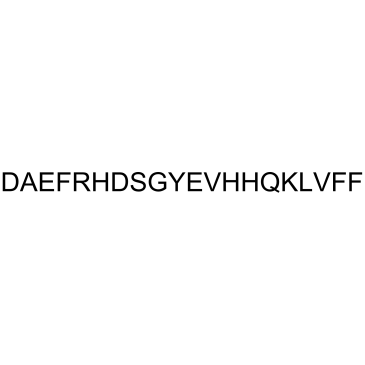
-
GC37993
β-Amyloid 1-9
β ; - L'amyloïde 1-9, un fragment N-terminal de la bêta-amyloïde, est constitué des résidus d'acides aminés 1 à 9.
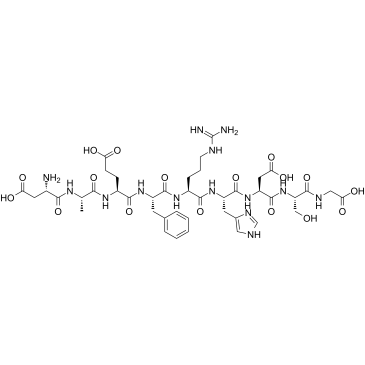
-
GC37985
β-Amyloid 11-22
β-Amyloid 11-22 est un fragment peptidique de β-Amyloid.
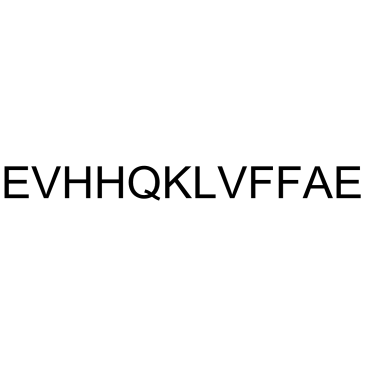
-
GC37988
β-Amyloid 12-20
β-Amyloid 12-20 est un fragment peptidique de β-Amyloid.
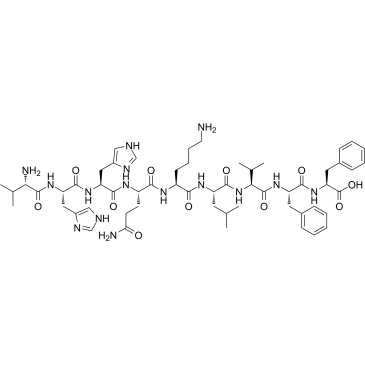
-
GC37991
β-Amyloid 15-21
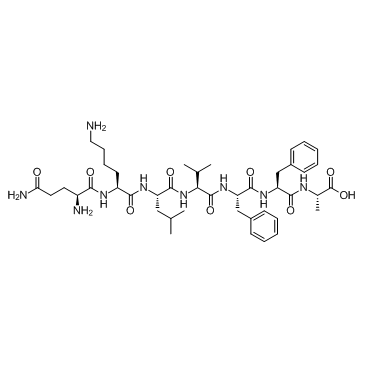
-
GC37992
β-Amyloid 18-28
β-Amyloid 18-28 est un fragment peptidique de β-Amyloid.
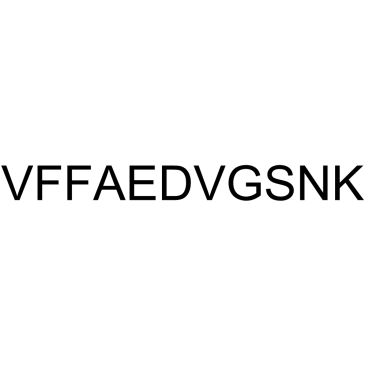
-
GC37994
β-Amyloid 22-40
β-Amyloid 22-40 est un fragment peptidique de β-Amyloid.
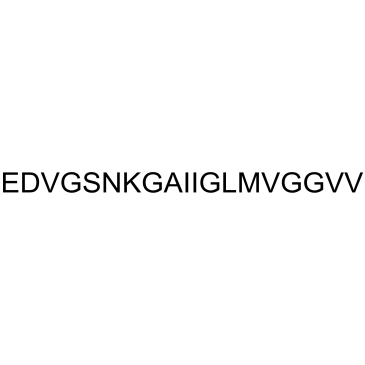
-
GC37995
β-Amyloid 33-40
β-Amyloid 33-40 est un peptide constitué d'acides aminés de 33 à 40 de la protéine bêta-amyloïde.
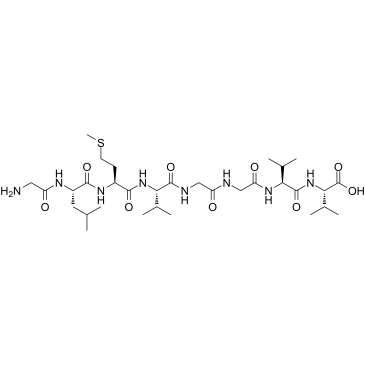
-
GC37996
β-Amyloid 35-42
β-Amyloid 35-42 est un peptide constitué d'acides aminés de 35 à 42 de la protéine bêta-amyloïde.
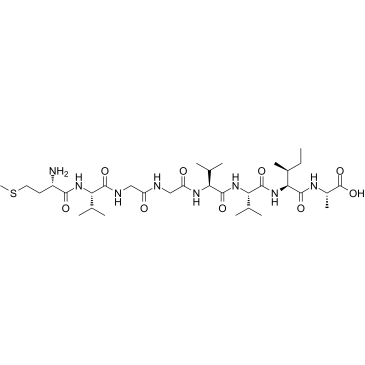
-
GC37997
β-Amyloid 4-10
β-Amyloid 4-10 est un épitope pour l'anticorps polyclonal anti-Aβ(1-42), réduit le dépôt d'amyloïde dans un modèle de souris transgénique de la maladie d'Alzheimer.
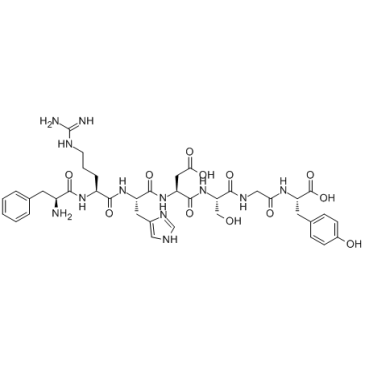
-
GC34944
β-CGRP, human TFA
Human β-CGRP TFA; CGRP-II (Human) (TFA)

-
GC41623
β-Elemonic Acid
Elemadienonic Acid, 3-Oxotirucallenoic Acid, 3-oxo Tirucallic Acid
β ; - L'acide élémonique est un triterpène isolé de Boswellia papyrifera.
-
GC45234
β-Endorphin (1-27) (human) (trifluoroacetate salt)
β-Endorphin (1-27) is an endogenous peptide that binds to μ-, δ-, and κ-opioid receptors (Kis = 5.31, 6.17, and 39.82 nM, respectively, in COS-1 cells expressing rat receptors).

-
GC45236
β-Endorphin (rat)
β-Endorphin (β-EP) is an endogenous opioid neuropeptide with diverse biological activities.

-
GC52494
β-Endorphin (rat) (trifluoroacetate salt)
An opioid neuropeptide

-
GC49769
β-Glucogallin
1-O-Galloyl-β-D-glucose
A plant metabolite and an aldose reductase 2 inhibitor
-
GC40105
βARK1 Inhibitor
βl'inhibiteur d'ARK1 (5-[2-(5-nitro-2-furyl)vinyl]-2-furoate de méthyle) est un inhibiteur de GRK2 (β-ARK1).

-
GC70650
γ-Acetylenic GABA hydrochloride
γ-Acetylenic GABA (GAG) drochloride is an irreversible inhibitor of GABA-transaminase.

-
GC38010
γ-Aminobutyric acid
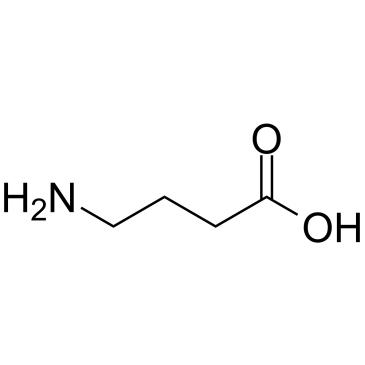
-
GC64508
γ-Aminobutyric acid-d6
L'acide γ-aminobutyrique-d6 (acide 4-aminobutyrique-d6) est l'acide γ-aminobutyrique marqué au deutérium.

-
GC49865
γ-D-Glutamylglycine (trifluoroacetate salt)
γ-DGG
An excitatory amino acid antagonist
-
GC48313
γ-Lindane
An insecticide and GABAA receptor antagonist

-
GC10872
α-Conotoxin AuIB
α-Conotoxin AuIB, a potent and selective α3β4 nicotinic acetylcholine receptor (nAChR) antagonist, blocks α3β4 nAChRs expressed in Xenopus oocytes with an IC50 of 0.75 μM.
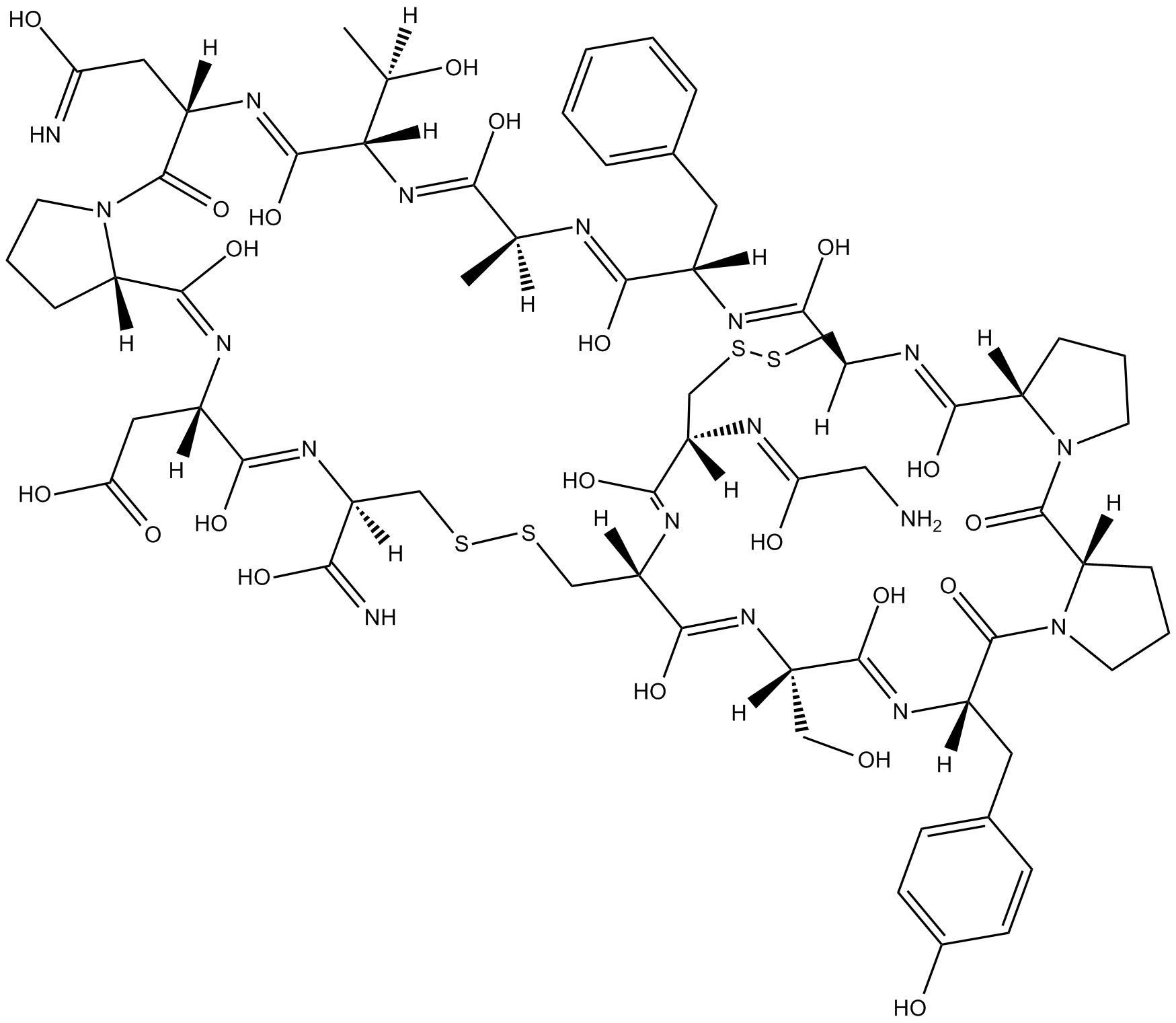
-
GC13644
α-Conotoxin EI
Selective antagonist of neuromuscular nicotinic receptors α1β1γδ
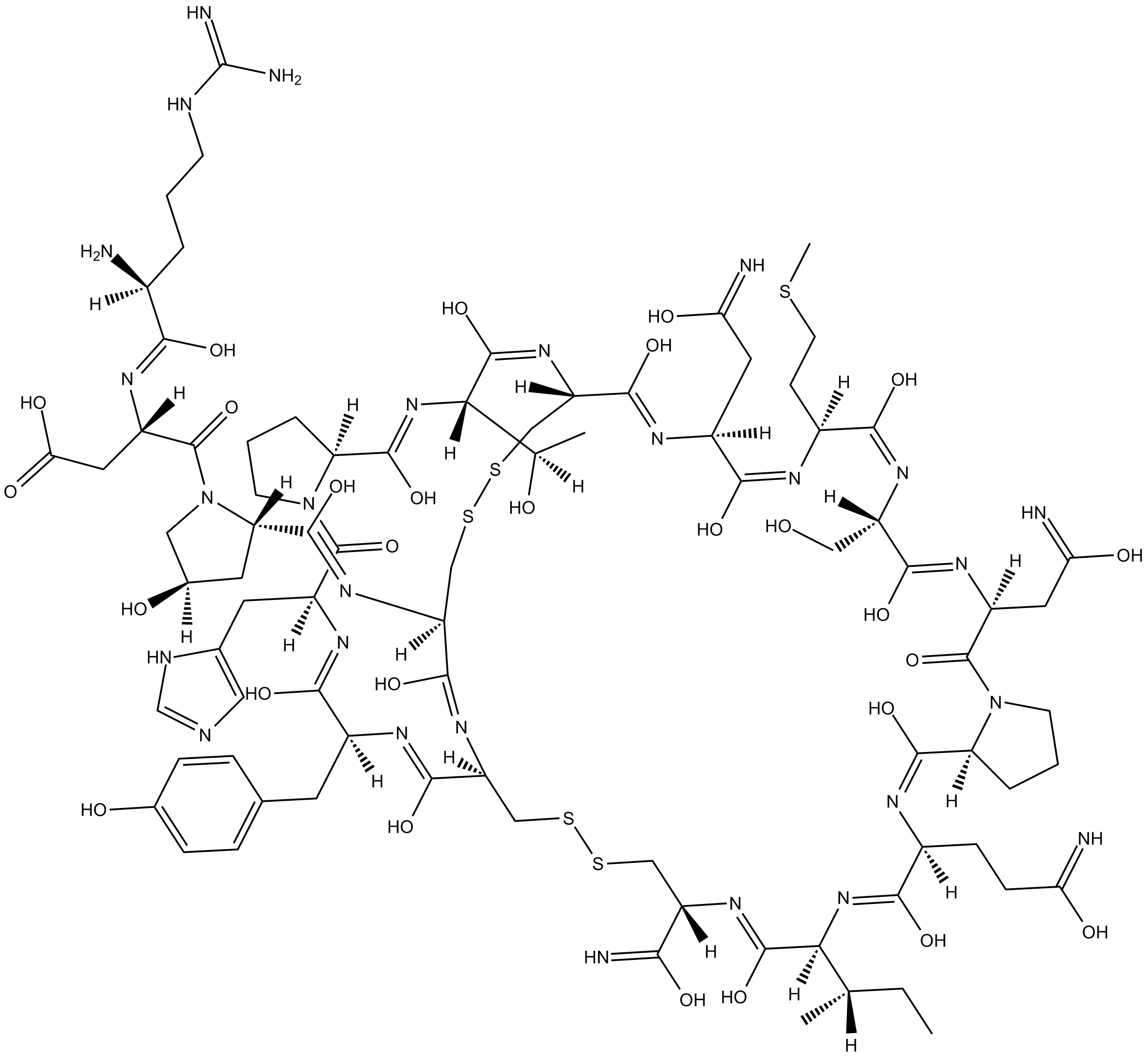
-
GC14353
α-Conotoxin ImI
Nicotinic receptor antagonist
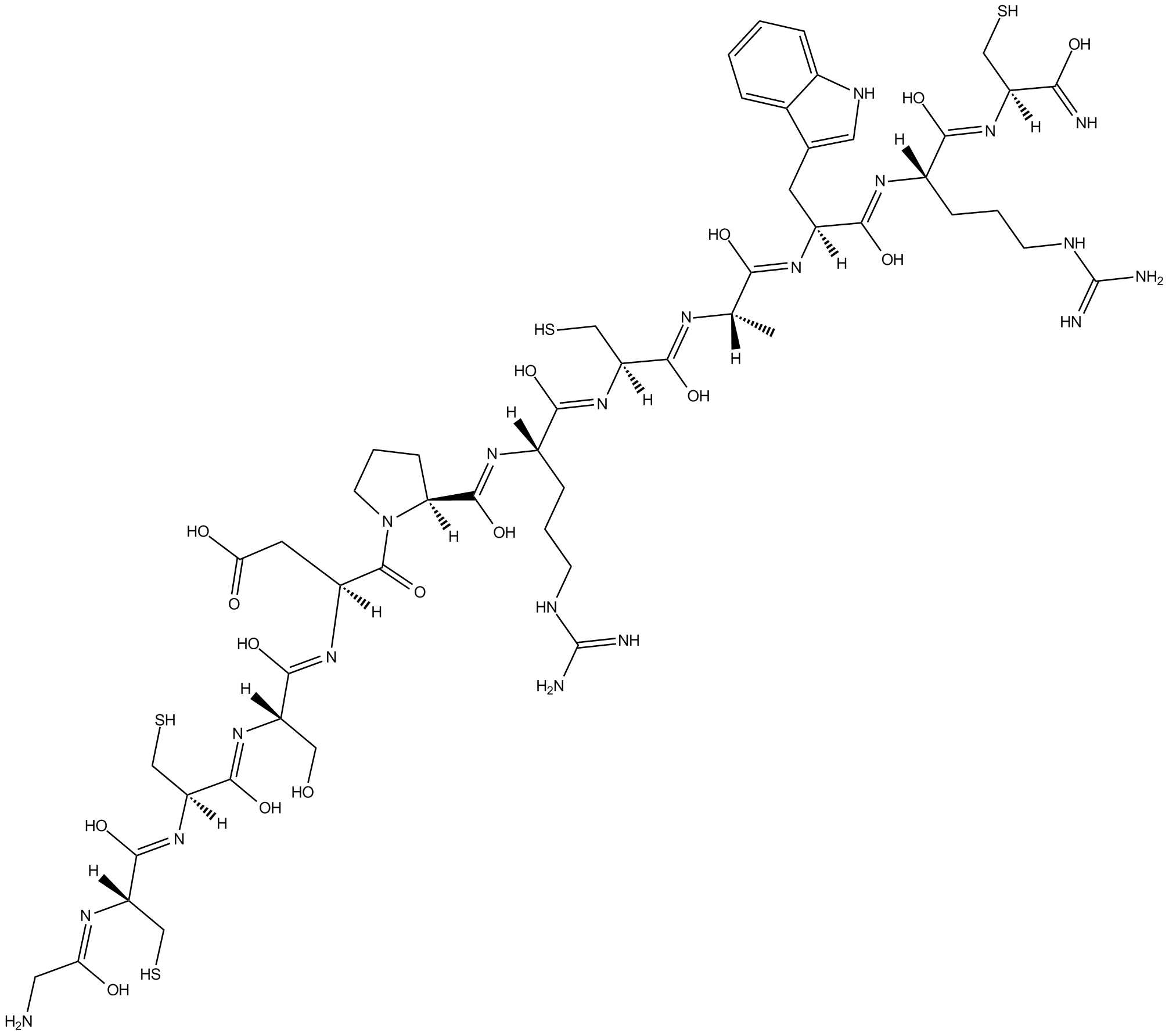
-
GC14296
α-Conotoxin PIA
La α-conotoxine PIA est un antagoniste des récepteurs nicotiniques de l'acétylcholine (nAChR) qui cible les sous-types de nAChR contenant les sous-unités α6 et α3.
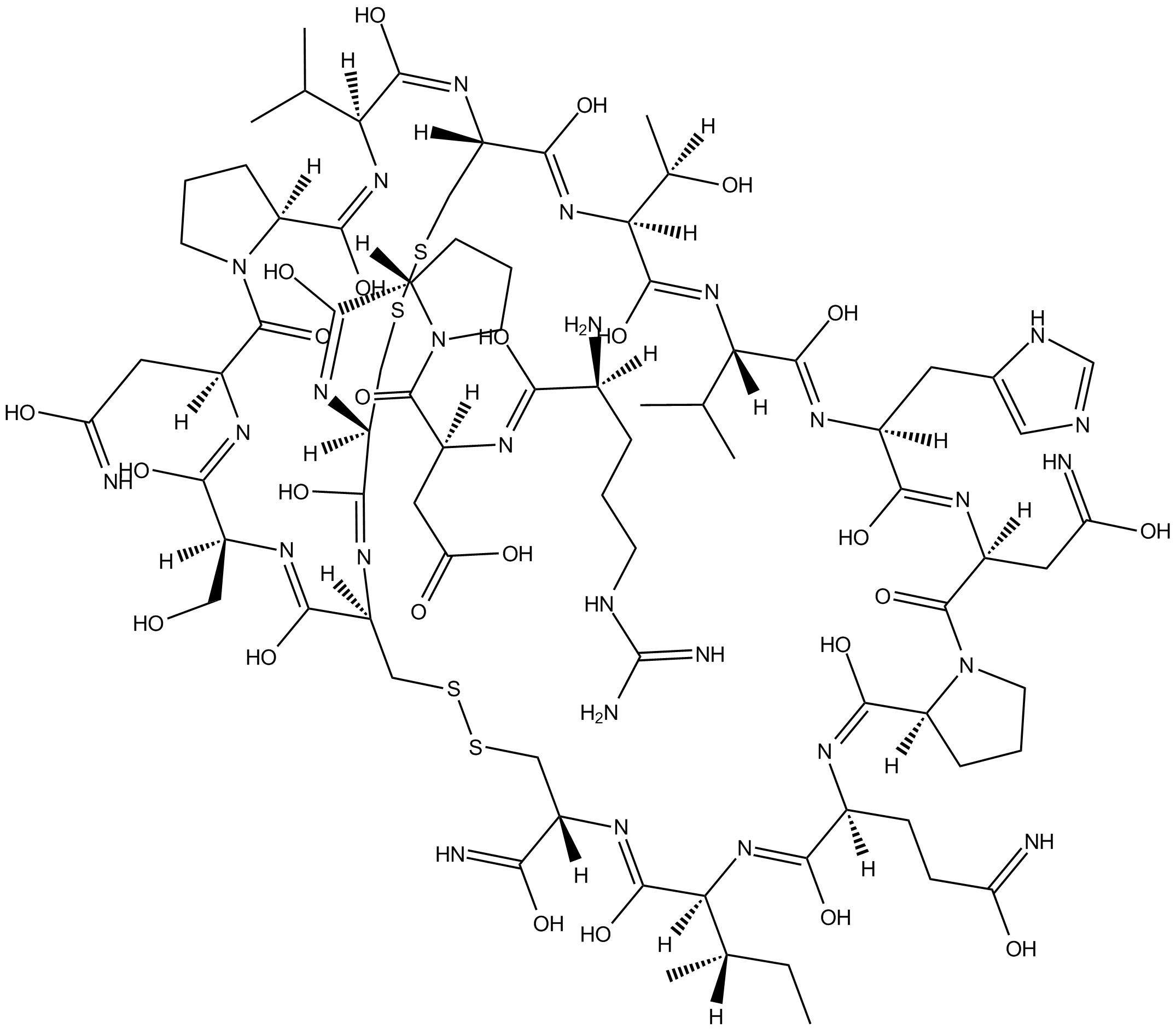
-
GC10368
α-Conotoxin PnIA
La α-conotoxine PnIA, un antagoniste puissant et sélectif du mammifère α7 nAChR, a le potentiel pour la recherche d'affections neurologiques telles que la douleur neuropathique et la maladie d'Alzheimer's.
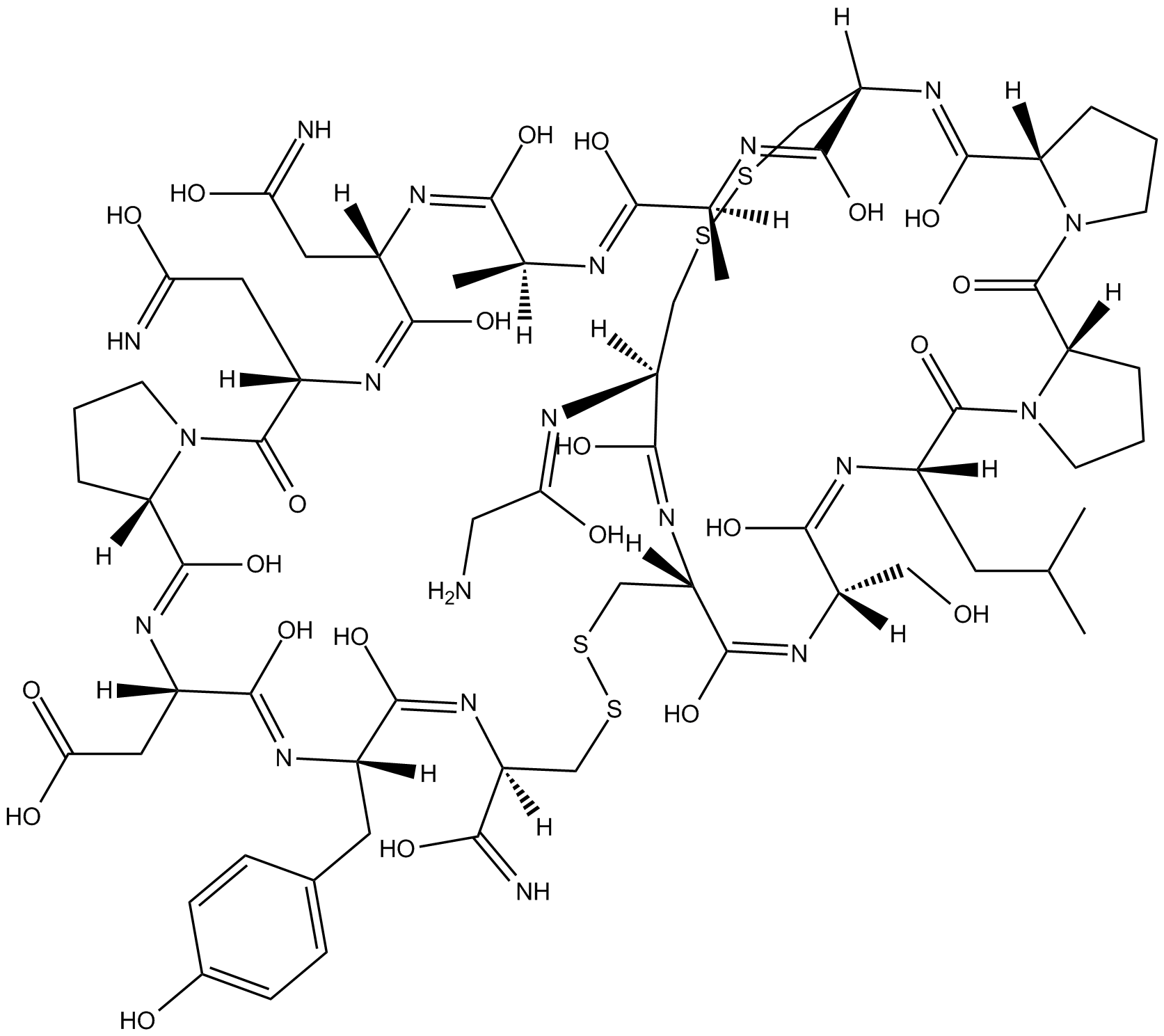
-
GC11577
α-Methyl-5-hydroxytryptamine maleate
α-Me-5-HT, α-Methyl-5-HT, α-Methyl-5-hydroxytryptamine, α-Methylserotonin
5-HT2B receptor agonist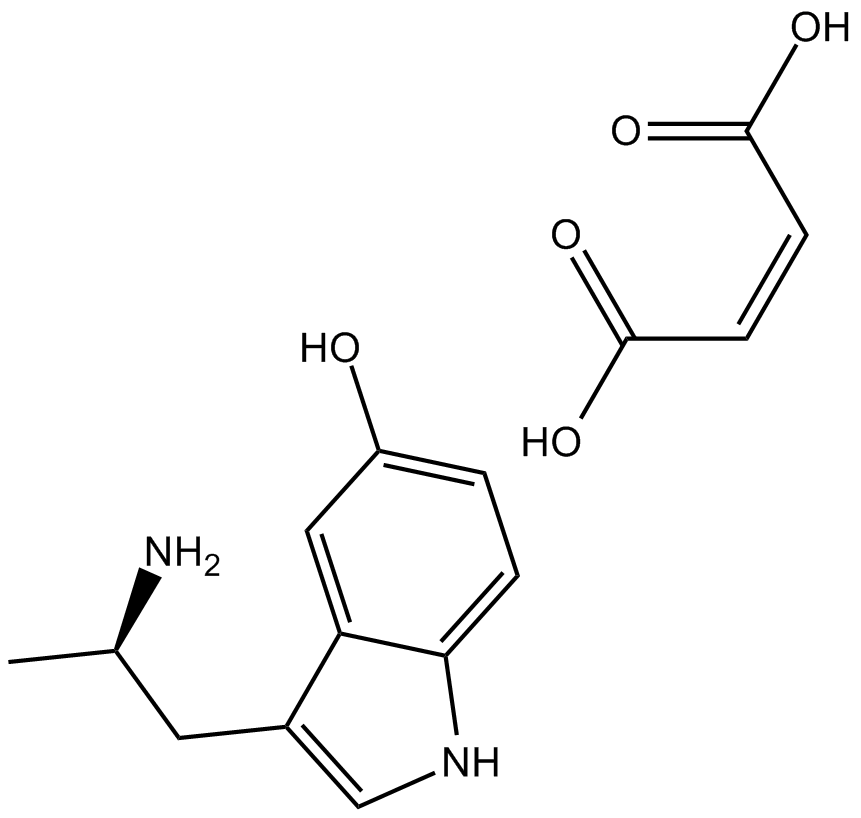
-
GC34242
β-Amyloid (1-42), rat TFA
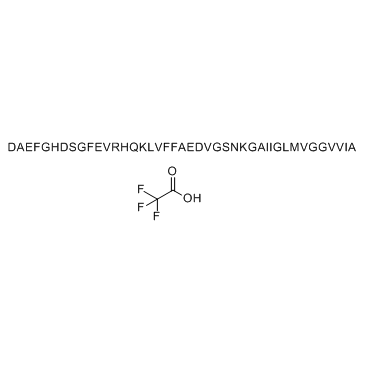
-
GC31146
β-Amyloid (10-35), amide
β-Amyloid (10-35), amide est composé de 26 aa (10-35 résidus du peptide Aβ) et est le principal composant des plaques amyloïdes de la maladie d'Alzheimer.
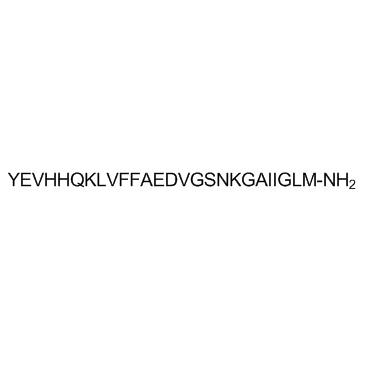
-
GC31129
β-Amyloid 1-16 (Amyloid β-Protein (1-16))
Amyloid β-Protein (1-16)
β-Amyloid 1-16 (Amyloid β-Protein (1-16)) est un fragment de protéine β-Amyloid impliqué dans la liaison au métal.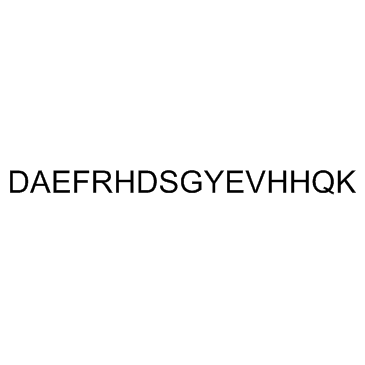
-
GC31171
β-Amyloid 1-28 (Amyloid β-Protein (1-28))
Amyloid β-Protein (1-28)
β-Amyloid 1-28 (Amyloid β-Protein (1-28)) est un fragment de protéine β-Amyloid impliqué dans la liaison au métal.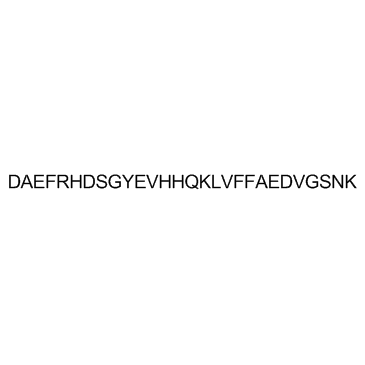
-
GC30325
β-Amyloid 22-35 (Amyloid β-Protein (22-35))
β-AmyloÏde 22-35 (AmyloÏde β-Protéine 22-35), le fragment des résidus 22-35 de la protéine β-amyloÏde, a un effet cytotoxique sur les neurones cultivés de l'hippocampe de rat dans un milieu sans sérum.
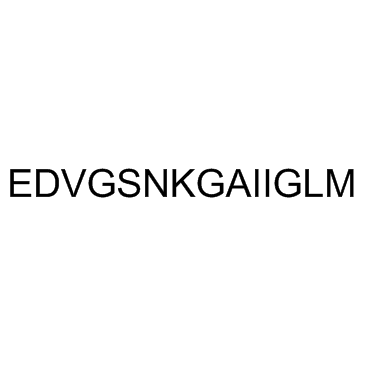
-
GC31137
β-Amyloid 29-40 (Amyloid beta-protein(29-40))
β-Amyloid 29-40 (Amyloid beta-protein(29-40)) est un fragment de Amyloid-β peptide.

-
GC31179
β-Amyloid 31-35
β-Amyloid 31-35 est la séquence la plus courte du peptide Amyloid-β natif qui conserve une activité neurotoxique.
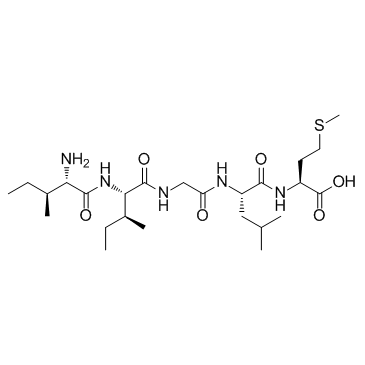
-
GC11449
β-CCB
benzodiazepine receptor ligand
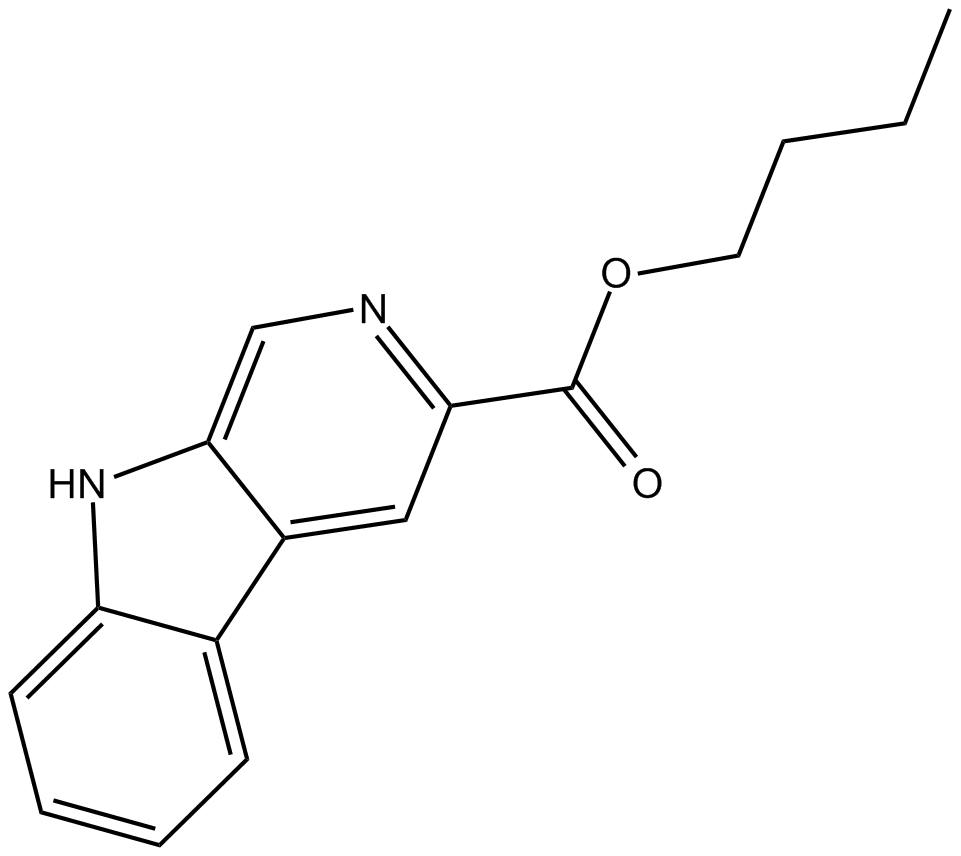
-
GC33595
β-CGRP, human (Human β-CGRP)
β-CGRP, humain (Humain β-CGRP) est l'un des peptides de calcitonine, agissant via le complexe du récepteur similaire à la calcitonine (CRLR) et de la protéine modifiant l'activité du récepteur (RAMP), avec des IC50s de 1 nM et 300 nM pour CRLR/RAMP1 et CRLR/RAMP2 dans les cellules.

-
GC18033
γDGG
γDGG est un bloqueur compétitif des récepteurs AMPA.
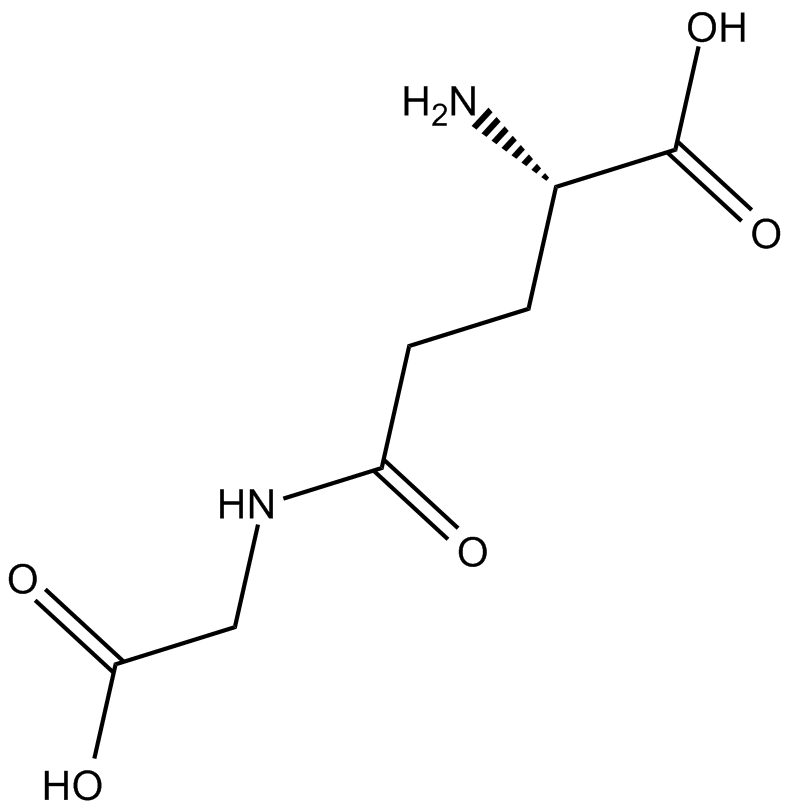
-
GC52013
(±)-10-hydroxy-12(Z)-Octadecenoic Acid
10-hydroxy-cis-12-Octadecenoic Acid
An oxylipin and metabolite of linoleic acid
-
GC52421
(±)-10-hydroxy-12(Z)-Octadecenoic Acid-d5
10-hydroxy-cis-12-Octadecenoic Acid-d5
An internal standard for the quantification of (±)-10-hydroxy-12(Z)-octadecenoic acid
-
GC41657
(±)-2-Amino-6,7-dihydroxy-1,2,3,4-tetrahydronaphthalene (hydrobromide)
(±)-ADTN, 6,7-ADTN, 6,7-diOHATN, NSC 287353
(±)-2-Amino-6,7-dihydroxy-1,2,3,4-tetrahydronaphthalene (6,7-ADTN) is a dopamine receptor agonist (EC50s = 3.5 and 0.65 μM in rat striatal and nucleus accumbens homogenates, respectively).
-
GC41658
(±)-2-hydroxy Ibuprofen
(±)-2-hydroxy Ibuprofène est un métabolite de l'ibuprofène.

-
GC62726
(±)-Amiflamine
(±)-Amiflamine (FLA 336) est un puissant inhibiteur de la monoamine oxydase-A (MAO-A) avec un pIC50 de 5,57.
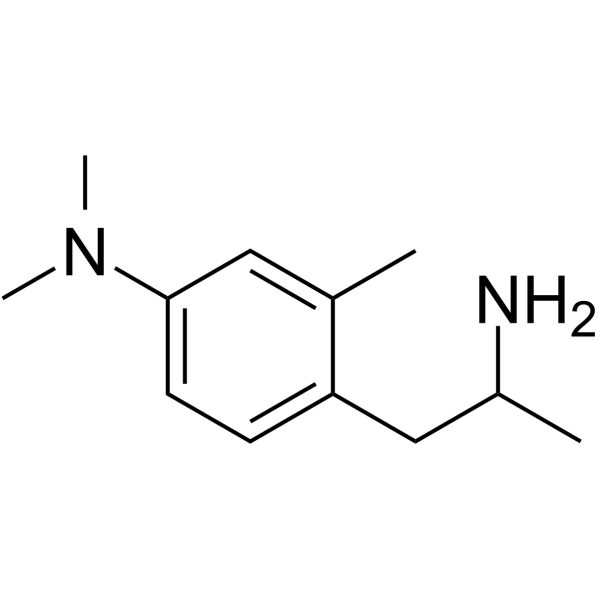
-
GC46272
(±)-Asenapine-13C-d3 (hydrochloride)
An internal standard for the quantification of (±)-asenapine

-
GC46274
(±)-Baclofen-d4
(±)-Baclofen-d4 est le baclofène marqué au deutérium.

-
GC72625
(±)-Coniine hydrochloride
(±)-Coniine drochloride (2-Propylpiperidine drochloride) is a potent nAChR agonist with an EC50 value of 0.3 mM.

-
GC60394
(±)-Duloxetine hydrochloride
(Rac)-Duloxetine hydrochloride
Le chlorhydrate de (±)-Duloxétine ((Rac)-Duloxétine) est le racémate du chlorhydrate de Duloxétine.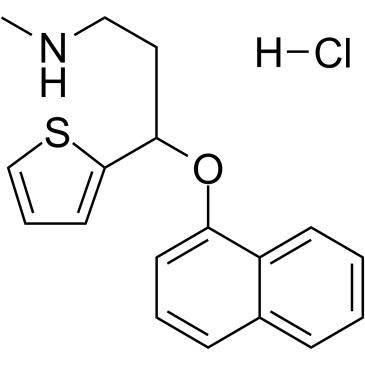
-
GC14410
(±)-Epibatidine
CMI 545
nicotinic agonist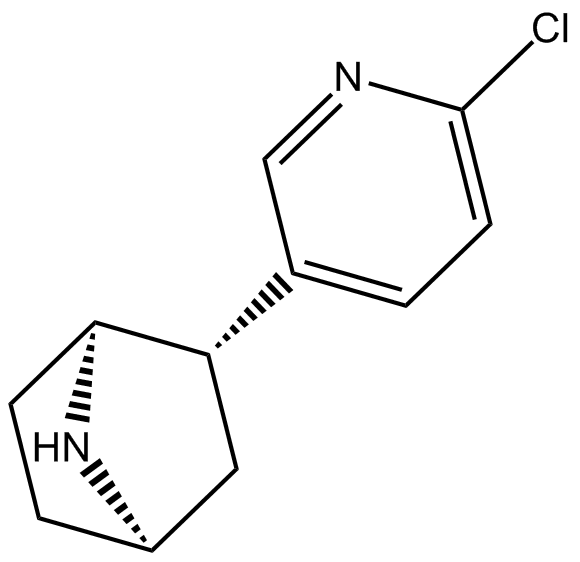
-
GC46288
(±)-Epibatidine (hydrochloride)
CMI 545 dihydrochloride
An agonist of α4β2 subunit-containing nAChRs
-
GC46290
(±)-Ibuprofen-d3
DL-Ibuprofen-d3
L'ibuprofène D3 est un ibuprofène marqué au deutérium.
-
GC49515
(±)-Ibuprofen-d3 (sodium salt)
DL-Ibuprofen-d3
An internal standard for the quantification of (±)-ibuprofen
-
GC45278
(±)-Ketoprofen-d3
(R,S)-Ketoprofen-d3, 2-(3-benzoylphenyl)Propionic Acid-d3

-
GC12699
(±)-LY 395756
ligand for mGlu2 and mGlu3 receptor
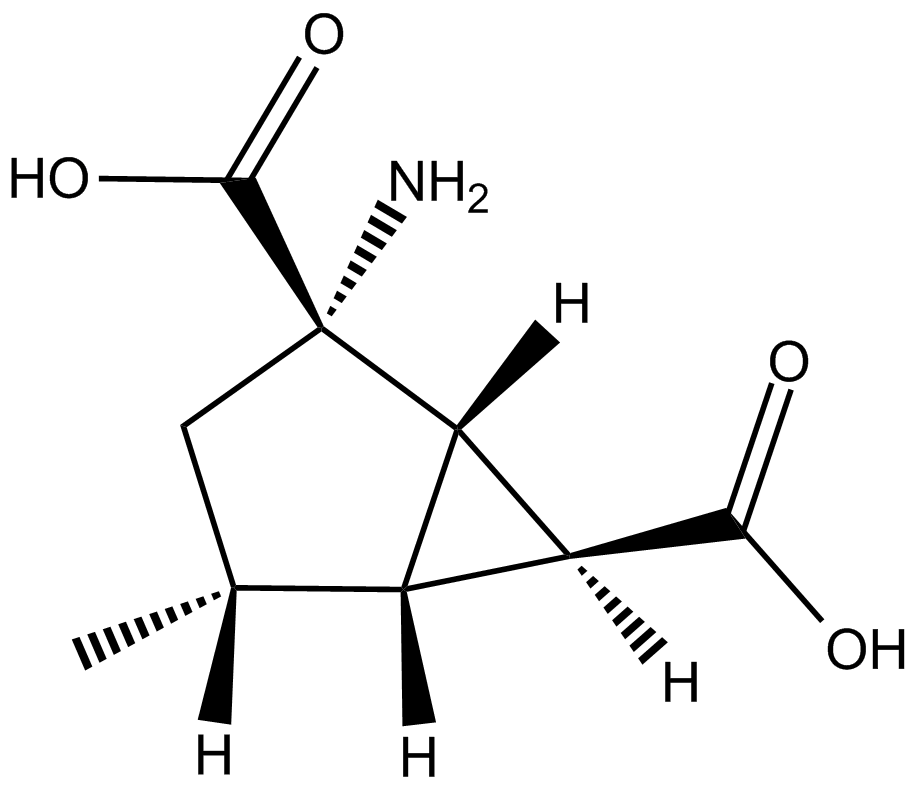
-
GC16735
(±)-McN 5652
5-HT uptake inhibitor
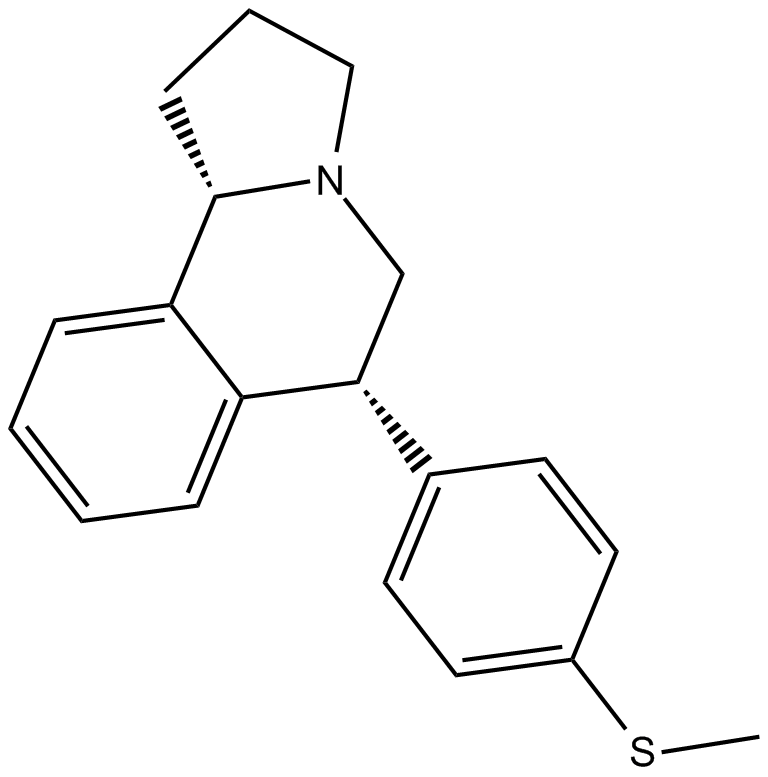
-
GC49875
(±)-N-desmethyl Venlafaxine (hydrochloride)
Wy 45494
A minor active metabolite of venlafaxine
-
GC46305
(±)-Nicotine-d3
DL-Nicotine-d3, (±)-Nicotine-methyl-d3
An internal standard for the quantification of (±)-nicotine
-
GC14834
(±)-Nipecotic acid
(±)-Nipecotic Acid, (R,S)-Nipecotic Acid, 3-Piperidine Carboxylic Acid, DL-Piperidine 3-Carboxylic Acid
GABA uptake inhibitor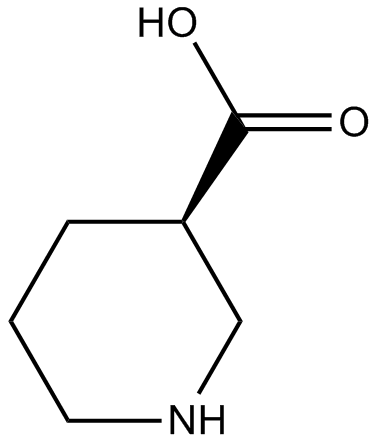
-
GC41676
(±)-Nornicotine
DL-Nornicotine, (R,S)-Nornicotine
(±)-Nornicotine is a metabolite of nicotine that acts as a neuronal nicotinic acetylcholine receptor (nAChR) agonist.
-
GC49482
(±)-Nornicotine-d4
DL-Nornicotine-d4, (R,S)-Nornicotine-d4
An internal standard for the quantification of (±)-nornicotine
-
GC12394
(±)-trans-ACPD
Trans-(±)-ACP
(±)-trans-ACPD, un agoniste des récepteurs métabotropiques, produit une mobilisation du calcium et un courant entrant dans les neurones de Purkinje cérébelleux en culture.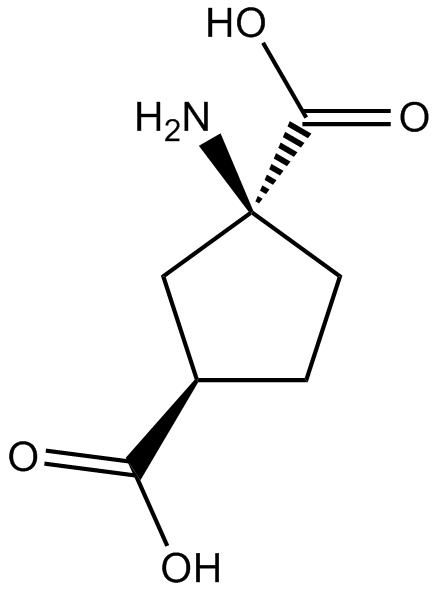
-
GC11128
(±)-Vesamicol hydrochloride
(±)-AH5183 hydrochloride
Le (M)-chlorhydrate de vésamicol (chlorhydrate de (±)-AH5183) est un puissant inhibiteur du transport vésiculaire de l'acétylcholine avec un Ki de 2 nM.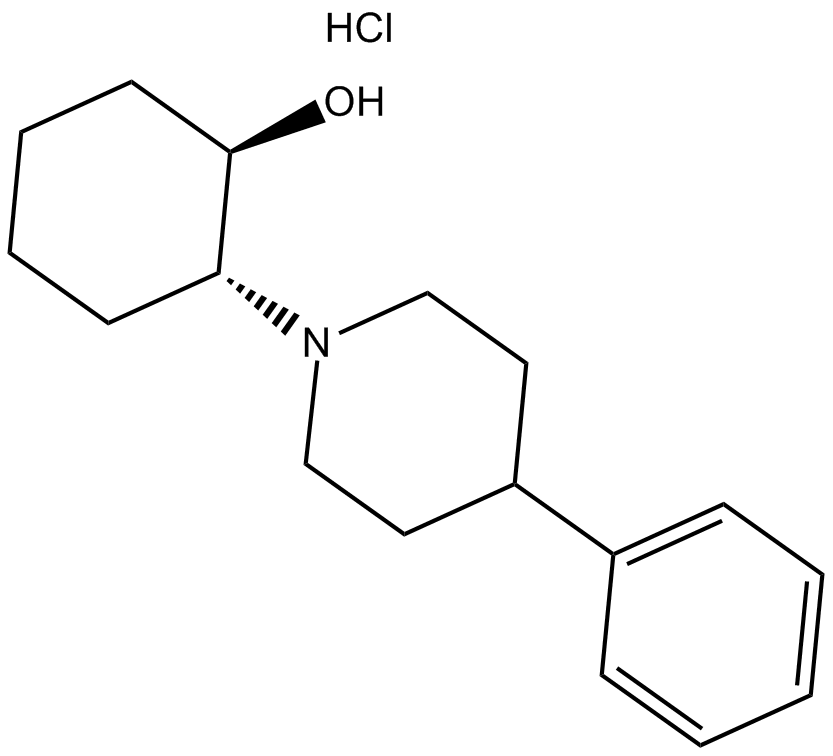
-
GC41685
(±)-WIN 55,212 (mesylate)
(±)-WIN 55,212-2 is a potent aminoalkylindole cannabinoid (CB) receptor agonist with a Ki value of 62.3 and 3.3 nM for human recombinant central cannabinoid (CB1) and peripheral cannabinoid (CB2) receptors, respectively.

-
GC41213
(±)10-HDHA
10hydroxy Docosahexaenoic Acid, (±)10HDoHE
(±)10-HDHA is an autoxidation product of docosahexaenoic acid (DHA) in vitro.

-
GC41214
(±)11-HDHA
11hydroxy Docosahexaenoic Acid, (±)11-HDoHE
(±)11-HDHA is an autoxidation product of docosahexaenoic acid (DHA) in vitro.
-
GC40467
(±)11-HETE
(±)11-Hydroxyeicosatetraenoic Acid
(±)11-HETE is one of the six monohydroxy fatty acids produced by the non-enzymatic oxidation of arachidonic acid.
-
GC40802
(±)12(13)-DiHOME
Isoleukotoxin diol
(±)12(13)-DiHOME is the diol form of (±)12(13)-EpOME, a cytochrome P450-derived epoxide of linoleic acid also known as isoleukotoxin.

-
GC41191
(±)13(14)-EpDPA
(±)13,14-EDP, (±)13,14-EpDPE, (±)13,14-epoxy DPA, (±)13,14-epoxy Docosapentaenoic Acid
(M)13(14)-EpDPA (13,14-EpDPE) est le produit de la réaction de la cytochrome P-450 époxygénase avec l'acide docosahexaénoïque (DHA).
-
GC41192
(±)13-HDHA
13hydroxy Docosahexaenoic Acid, (±)13-HDoHE
(±)13-HDHA is an autoxidation product of docosahexaenoic acid (DHA) in vitro.
-
GC41193
(±)14-HDHA
14hydroxy Docosahexaenoic Acid, (±)14-HDoHE
(±)14-HDHA is an autoxidation product of docosahexaenoic acid (DHA) in vitro.
-
GC41194
(±)16(17)-EpDPA
(±)16,17 EDP, (±)16,17-epoxy Docosapentaenoic Acid, (±)16,17-epoxy DPA, (±)16,17-EpDPE
EDHF (endothelium-derived hyperpolarizing factor) is an unidentified mediator released from vascular endothelial cells in response to acetylcholine and bradykinin which is distinct from the NOS- (nitric oxide) and COX-derived (prostacyclin) vasodilators.

-
GC41196
(±)16-HDHA
16hydroxy Docosahexaenoic Acid, (±)16-HDoHE
(±)16-HDHA is an autoxidation product of docosahexaenoic acid (DHA) in vitro.
-
GC41197
(±)17-HDHA
17-hydroxy Docosahexaenoic Acid, 17-hydroxy DHA, (±)17-HDoHE
(±)17-HDHA is an autoxidation product of docosahexaenoic acid in vitro.
-
GC41199
(±)19(20)-EpDPA
(±)19,20 EDP, (±)19,20-epoxy Docosapentaenoic Acid, (±)19,20-epoxy DPA, (±)19,20-EpDPE
EDHF (endothelium-derived hyperpolarizing factor) is an unidentified mediator released from vascular endothelial cells in response to acetylcholine and bradykinin which is distinct from the NOS- (nitric oxide) and COX-derived (prostacyclin) vasodilators.
-
GC41202
(±)4-HDHA
4hydroxy Docosahexaenoic Acid, (±)4HDoHE
(±)4-HDHA is an autoxidation product of docosahexaenoic acid (DHA) in vitro.
-
GC41203
(±)7(8)-EpDPA
(±)7,8-EDP, (±)7,8-EpDPE, (±)7,8-epoxy DPA, (±)7,8-epoxy Docosapentaenoic Acid
Docosahexaenoic acid is the most abundant ω-3 fatty acid in neural tissues, especially in the brain and retina.
-
GC41204
(±)7-HDHA
7hydroxy Docosahexaenoic Acid, (±)7HDoHE
(±)7-HDHA is an autoxidation product of docosahexaenoic acid (DHA) in vitro.

-
GC41205
(±)8-HDHA
8hydroxy Docosahexaenoic Acid, (±)8HDoHE
(±)8-HDHA is an autoxidation product of docosahexaenoic acid (DHA) in vitro.
-
GC33544
(±)-Methotrimeprazine (D6) (dl-Methotrimeprazine D6)
(±)-Methotrimeprazine-d6; dl-Methotrimeprazine-d6
(±)-Levomépromazine D6 ((±)-Méthotrimeprazine D6) est la version deutérium marquée de la méthotrimeprazine, qui est un antagoniste des récepteurs de dopamine D3 et d'histamine H1.
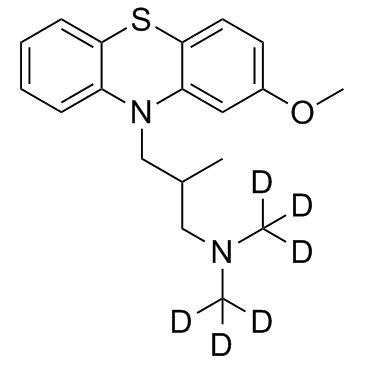
-
GC31026
(±)-Tazifylline
(±)-Tazifylline est un antagoniste des récepteurs de l'histamine H1 puissant, sélectif et à longue durée d'action.
